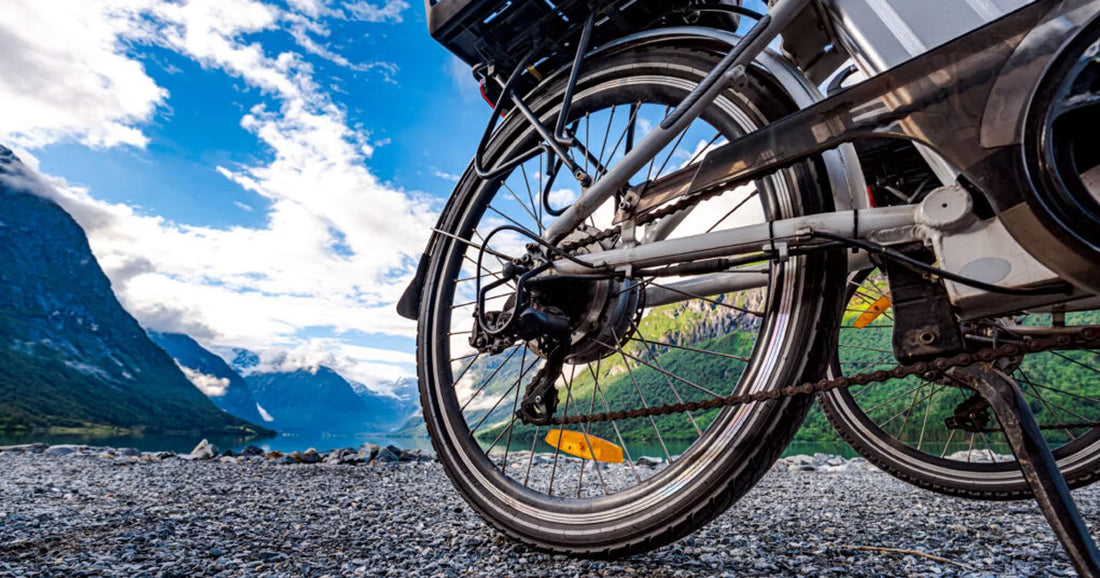
What Technology Powers E-bikes?
E-bikes are the fastest-growing category in the cycling industry globally.
The past years have shown a rise in its popularity. More and more people are wondering what is in an e-bike that is different from conventional bicycles. The e-bike is now accepted as a viable transportation option and as a sustainable recreational tool.
This article introduces you to the different technologies that are on e-bikes and how these features are constantly being improved on. Expect e-bikes to be better and safer in the years to come.
What makes e-bikes different from conventional bikes?
An e-bike is foremost a bicycle equipped with a motor system. Most e-bikes look like the conventional pedal-powered bicycle. There are times that it might be hard to differentiate an e-bike from the manual one, except when taking a closer look.
Electric bicycles are made with more power output and they are robust. A standard bike is built on a specific frame and reinforced components and forks to handle the load. These bikes may not be able to carry a weight of more than 18kg.
Motors
E-bikes come with a motor system that is composed of the battery pack or packs, drive unit, wiring, and control unit. Some motor brands have integrated proprietary units like drive units and displays with other options on the motor system.
Motor power, torque output, assist modes and battery size are dependent on the e-bike’s intended use. There are 2 styles. Those that have a motor at the rear hub and those that are mounted to the frame at the bottom bracket referred to as Pedeles motors.
Hub-driven motors are often on conversion kits that can be fitted into conventional bicycles. This is a cheaper option. The Pedeles motors are better in terms of efficiency, quality and are set up using standard parts. An advantage to this type of motor is that a sensor is included that detects how much pedaling is being made so that the drive unit can calculate what level of power assistance it can provide.
E-bike Assistance Modes
There are usually 3 levels or modes of assistance for an e-bike motor system. At standby level, the e-bike operates just like an ordinary bicycle and has no electric assistance. There are still basic metrics shown on the display controllers, even on standby.
The Eco mode is the lowest setting which is usually optimized for a certain range. Manufacturers theoretically claim a range of over 100km. What this means is that for every pedal stroke by the rider, the drive unit provides an additional 25-80% on top of the 250watts or 25kph. The Eco mode is widely resorted to for flat terrains.
At a normal mode, the drive unit matches pedaling effort by 100-150%. This additional power can provide easy maneuvers for traffic light stops and intersections. The motor will have more torque than the Eco mode when acceleration is made from a standstill.
It is now easy to get some insights into what an e-bike can do. Selecting the highest mode of assistance makes steep pedaling uphill and riding into a stiff headwind an easy thing. Some e-bikes provide maximum assistance of 200% which is suitable for riding at a faster pace.
E-bikes can handle from 50 to 150km, depending on the riding style, motor power, assistance mode, and battery size.
Batteries
The battery pack is an important part of the electric bike motor system. The batteries are available in a range of 200w to 500w wattage. The number of watts will indicate the range of offer with a higher wattage able to provide increased range capacity. Electronic bikes usually come with a one-pack fitted but it is not uncommon to have two battery packs in some motor systems to have an increased range.
When it comes to replacing a depleted battery, you just have to simply plug the bike into a wall outlet via the supplied charger. The time needed to charge a battery depends on the capacity, amperage output, and power standards. A full charge from an empty battery can take from 3 to 5 hours. A lot of e-bikes ship with a 2-amp charger as standardized by most manufacturers.
The battery technology used by many manufacturers in lithium-ion technology can be found in laptops and electric cars. This technology allows a life expectancy of 1,000 full discharge/recharge cycles. It is estimated that battery life should take around a 3-5year cycle. This is pretty much the same for mobile phones. Users should only have the battery replaced by the same manufacturer to be assured that it cannot harm the e-bike function.
Lithium-ion batteries should not be completely discharged and should be charged once every 3 months if it is not used for a long time. For safety, always use the charger that came with the e-bike to avoid power spikes, overheating, or short-circuits. In conclusion, E-bikes will be part of the transportation options and will continually be improved. Better technology will be applied for more efficient functions. The article covers the most important parts of the e-bike, but riders should always be on the lookout for improved technologies.
In conclusion
E-bikes will be part of the transportation options and will continually be improved. Better technology will be applied for more efficient functions. The article covers the most important parts of the e-bike, but riders should always be on the lookout for improved technologies.



